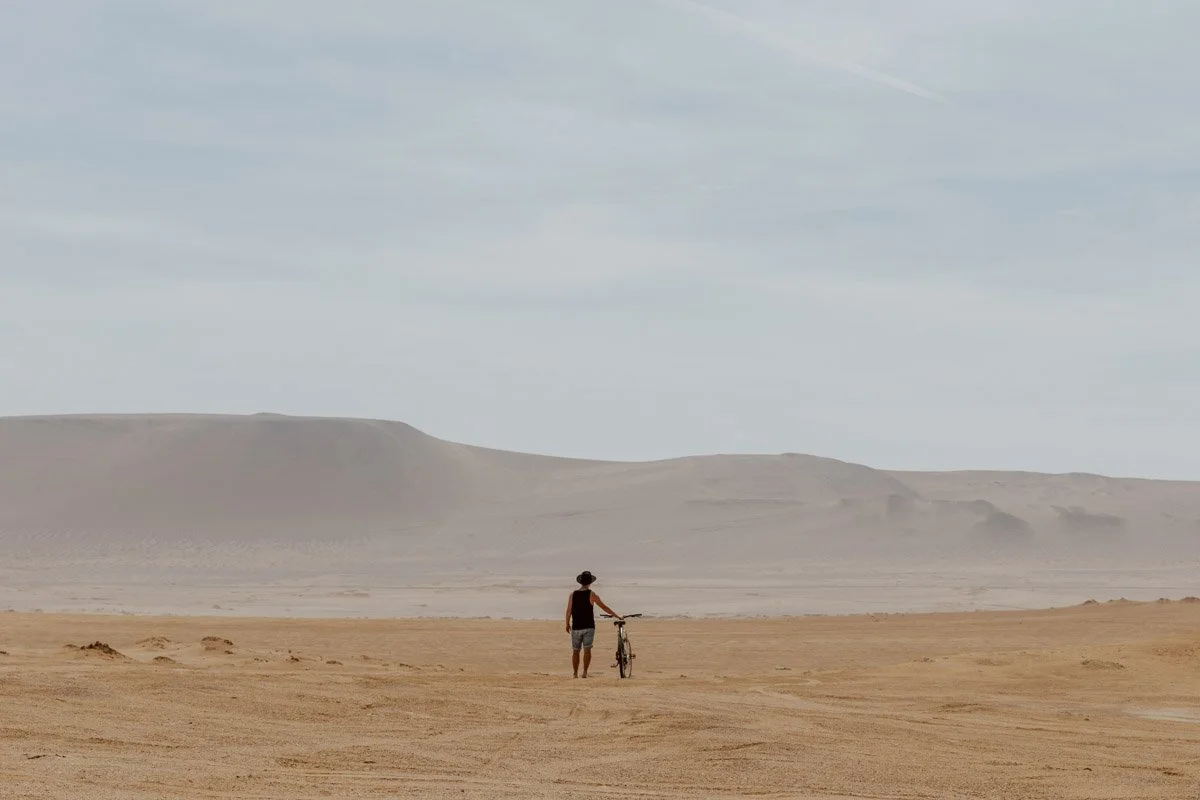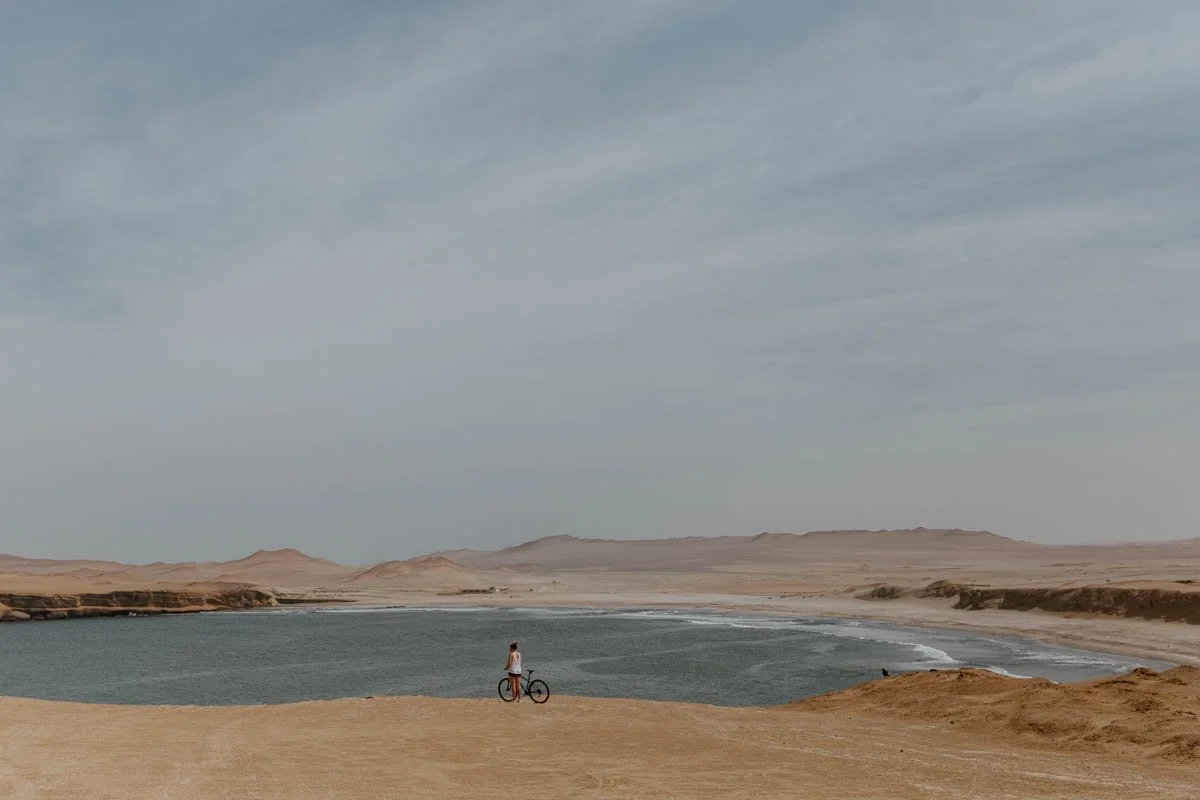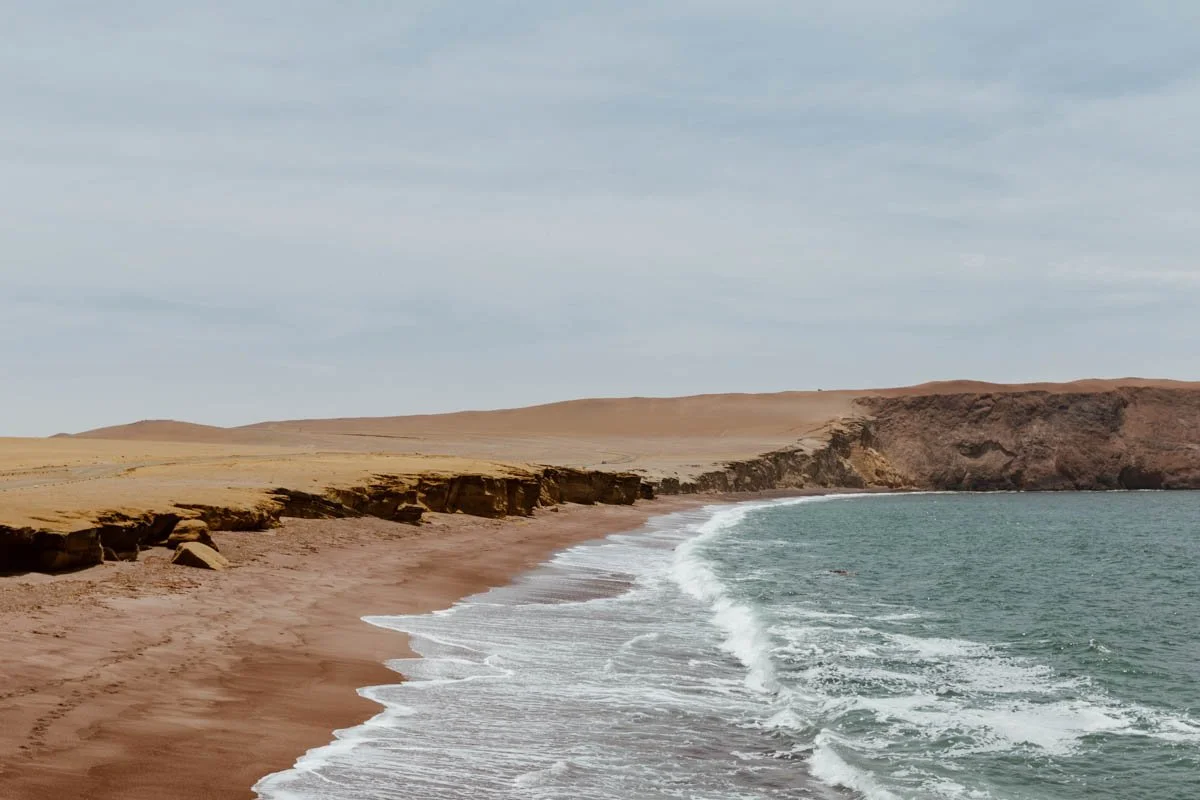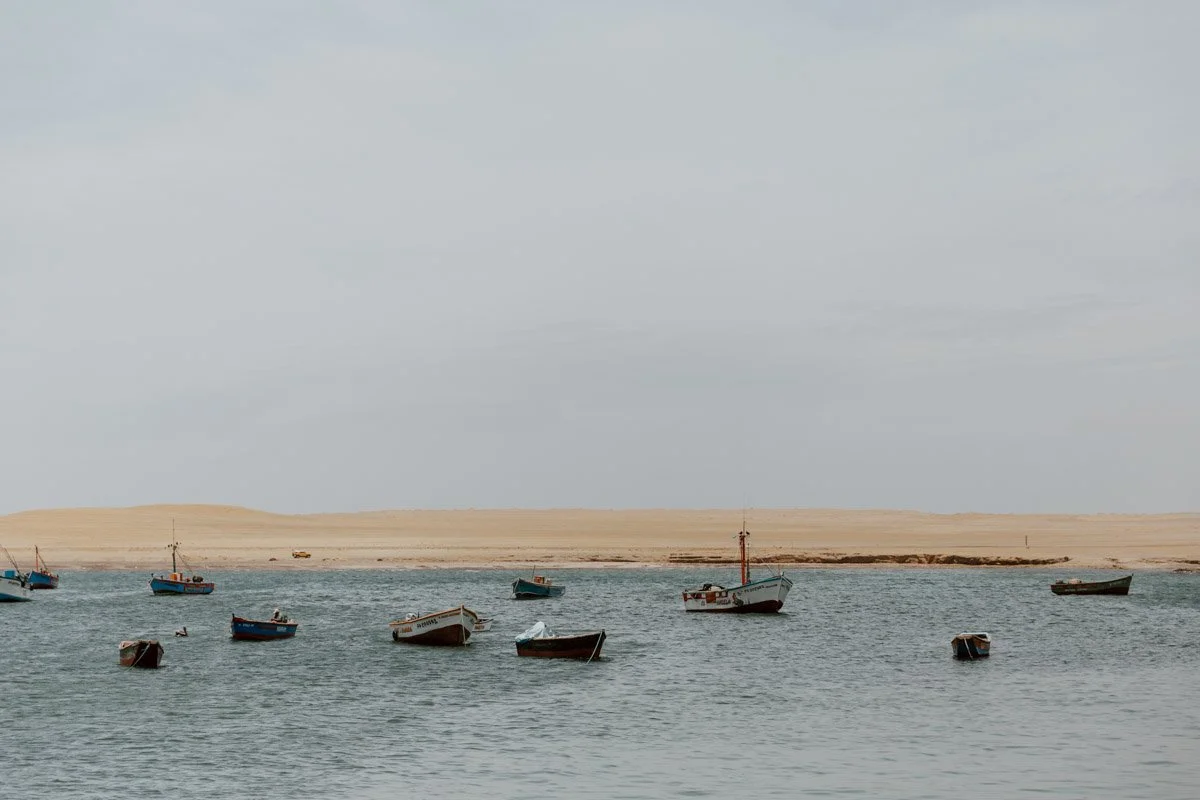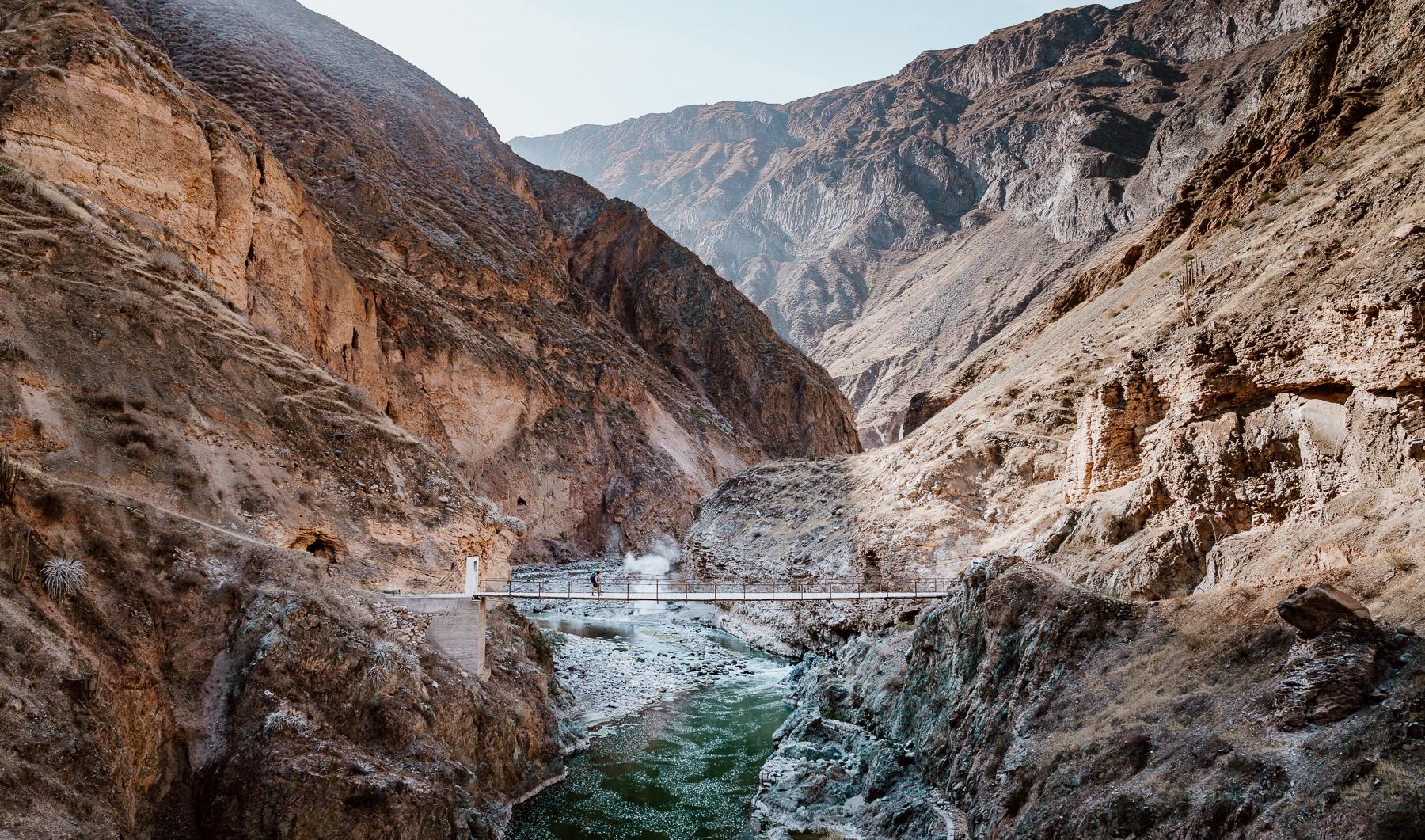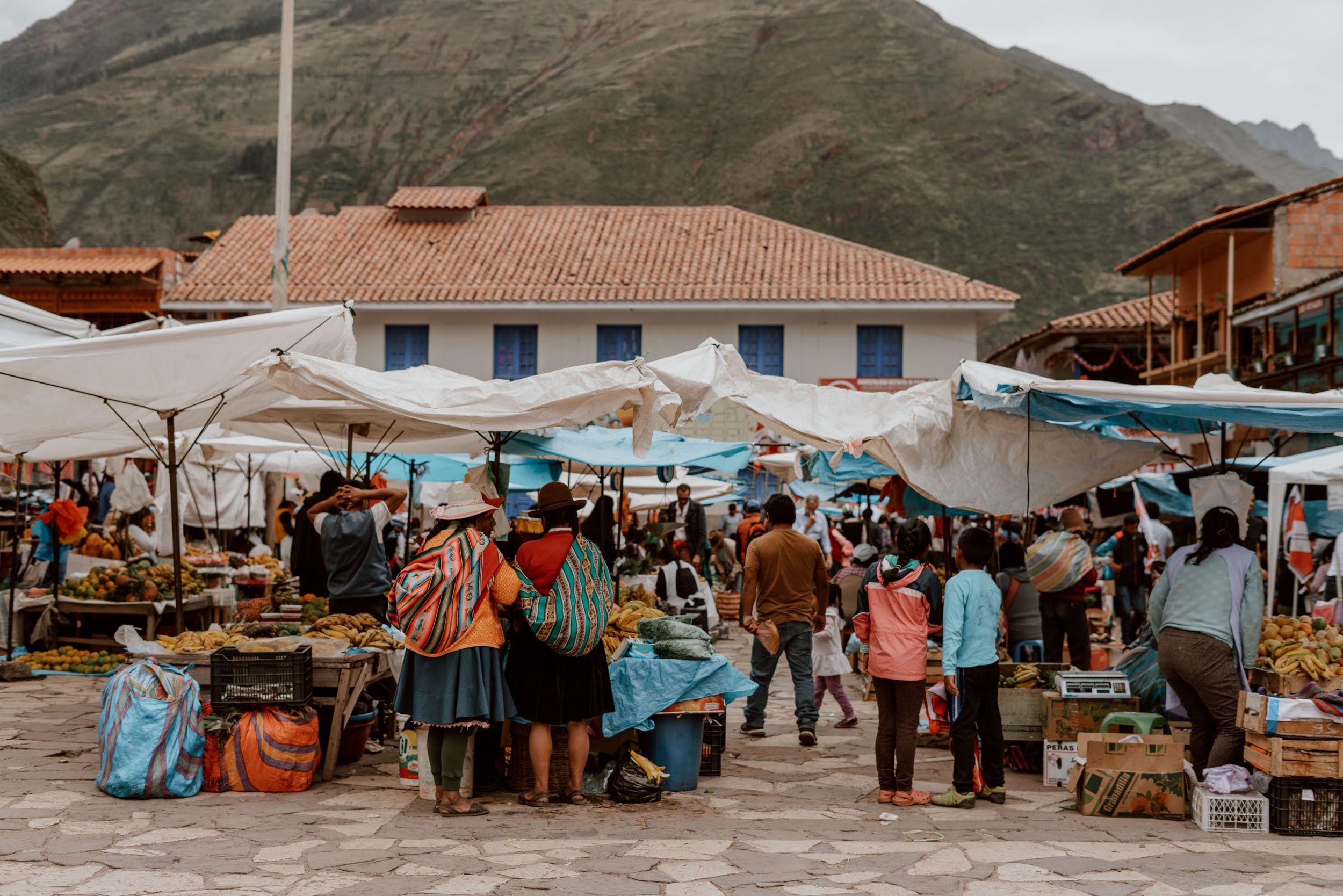Exploring Paracas National Reserve is the second most popular thing to do in this part of Peru, ad we did it by bike. In this guide, discover how you can have a fantastically sweaty, adventurous day on two wheels too!
Updated September 2023
When people think of visiting the Paracas National Reserve, often their first thought is a tour to Islas Ballestas. And whilst this is absolutely worth it (those seals and penguins really are pretty damn adorable!), it’s not the only way that this remarkable national park should be explored.
Instead, you should hop on a bicycle rental, and set off on an epic adventure on two wheels; we decided to do this during our three nights in Paracas and it turned out to be one of our favourite day trips in Peru.
Rutted roads and desolate desert scenes, punctuated only by vast orange dunes that stretch on for miles - or until the ground falls suddenly away into the ocean beyond towering cliffs of yellow and grey. The Paracas National Reserve bicycle route leads you through the land where the sea meets the desert, where red-headed vultures swoop overhead and where you can truly be away from the crowds - and having a much better experience than anyone driving around with a tour.
Here’s everything you need to know about how to plan an independent day trip to Paracas National Reserve by bicycle.
Psssst. Not sure you’ve quite got it in you to cycle 30 kilometres under a hot desert sun but still want to see Paracas National Reserve? Have no fear, as it’s also possible to visit by bus, scooter, or on a fun-filled dune buggy tour.
For a real adrenaline hit, you can even paraglide over the Reserve!
Paracas National Reserve
Where / A few kilometres outside of Paracas
How / Can visit by car, bike, bus or dune buggy
Best / We loved exploring on two wheels!
Route / Approximately 30 km, allow 7.5 hours by bike
Stay / Our favourite hostel Paracas Backpackers' House or splash out at little at Casa Paracas
Bike Rental In Paracas
Okay, so first things first, where do you rent a bike in Paracas?
There are a number of tour companies in town who also rent bikes, and indeed your own hostel may provide rentals - expect to pay somewhere in the region of S/35 and S/50 for the day per bike depending on the quality of bike. We rented with Playa Roja Tours (maps), however a reader has told us that the bikes at the place next door are much better, and a friend recently rented from Paracas Travel Express (maps) and was happy with his choice.
Note that most tour companies will also rent scooters if you’d prefer.
We arranged and paid for our bikes the night before, which is what we’d recommend, just make sure to get a receipt. Not only does this save you time, it ensures you find a rental that is guaranteed to be ready and open for your departure early the next morning.
Departing from Paracas no later than 7.30 am is highly recommended so that you avoid the worst of the desert heat and dehydration.
When choosing your bike, don’t be afraid to refuse one or two. Good suspension is essential, as are working gears and not every cycle is blessed with both. Ask for the chain to be oiled and wheels to be pumped before taking it out for a test ride down the street.
Even with all the pre-trip checks, don’t have high hopes for a bike in spectacular condition. The majority of the chains have a great deal of rust, but if the brakes are good and it can cope with uneven roads, you’ll be fine.
Keep Reading // Read our guide to Paracas to know the best activities, places to eat, transport connection, and where to stay.
Entry Fee to Paracas National Reserve
Officially, the entry to the National Reserve is S/11, although should you set off early on your adventure, it’s likely that you won’t have to pay it.
We passed the check point at 7.30 am (leaving the centre of Paracas at 7.10 am) and there was nobody from whom to buy it; instead we were waved straight through. Others have mentioned similar experiences at any point before 8 am, however we’d highly recommend always carrying the necessary money for entry and, importantly, be fully prepared to pay.
Note that if you visited Islas Ballestas on the previous day, simply keep your park entry ticket and show it should you be asked - it’s good for the duration of your time in Paracas.
Find the entry / checkpoint here on Google Maps.
How Long Does The Bicycle Trip Take?
We departed Paracas around 7.10 am (we had aimed for a little earlier, but we had to try quite a few bicycles before settling on a couple we were happy with), cycling for 20 minutes before we arrived at the entry point.
In total, we spent 7.5 hours cycling the route, returning to Paracas at 2.30 pm. This included a 45-minute lunch stop at Lagunilla within the Paracas National Reserve. Our pace was above average, but the road, wind, photo stops, and bike conditions will all play a factor in your own time.
Whilst we’re not entirely convinced you need to leave quite as early as others have suggested (we were never going to set out at 5am!), we would strongly advise against leaving any later than 8am to ensure you can return safely by 5pm - and in turn avoid at least a little of the strong sun.
If you are a slow cyclist or struggle in the heat, leave earlier than we did.
The Paracas Reserve Route
(plus Popular Spots Along The Way)
Once you find your way to the Paracas National Reserve, the route to follow is quite well sign-posted (including the distances to each stop) and relatively clear.
Prior to setting off, your rental company should provide you with a small map of the route. They may suggest taking the loop that first goes to La Mina beach - we strongly recommend you don’t follow their advice, and instead follow the loop in the opposite direction with Playa Supay and then La Catedral as your first stops.
This will ensure you attempt the longest, least entertaining (though very photogenic) stretch of road when you’re full of energy and the sun isn’t strong.
For the 15-20 minute cycle ride from Paracas to the Paracas National Reserve entrance, the route out of town to the main road is sign-posted, but it’s a good idea to ask your the rental company to confirm the way before you start peddling (and to have an offline Google Map on your phone).
Once through the Paracas National Reserve entrance, go LEFT towards La Catedral, which is sign-posted. This will take you along 10 kms of pretty poor road (inverse cheetah marks where there appears to be more pothole than road) but stunning desolate desert scenery.
There are more trucks on the road than you may expect, but that’s pretty much it.
Towards the end, don’t take the first right turn you see towards Yumaque beach, but instead continue on until you see the below sign and turning, and take that right. From here, you’re going to be essentially cycling in a loop with a few branch roads off to specific spots.
Playa Supay
The first viewpoint you’ll meet on the route is overlooking Playa Supay, a long beach dotted with piles of seaweed (allegedly sold to luxury skin care brands) and edged by imposing granite-grey limestone cliffs. We were told that dolphins frequent the shoreline, and indeed within minutes we had spotted a pod frolicking in the waves.
See the above map or find Playa Supay here.
La Catedral
What once stood as a grand rock formation, was in 2007 returned to the sea when a large earthquake struck the area. Nevertheless, it’s still worth dismounting from your bicycle (you’re unable to mount the wooden boardwalk that leads to the viewpoint with your bicycle so leave it at the cabin) to see the remnants of La Catedral.
See the above map or find La Catedral here.
Playa Yumaque
After you’ve got your fill of La Catedral, it’s on towards Yumaque beach and some great viewpoints.
Prior to getting to the beach, you may notice (like us), a small sign on the left advising a 5 km walk to, well, we’re still not entirely sure. We pushed our bikes quite some way along the coast line - in the opposite direction to where we actually needed to go - but found nothing extraordinary to note. The views were, naturally, stunning.
But should you spot the same sign, feel free to ignore it and keep on peddling!
It’s worth noting that at this time the road switches from pot hole ridden into delightful ridges upon bumpy ridges; this is the reason it is so important to ensure your bike has good suspension before setting off!
See the above map or find Playa Yumaque here.
Playa Roja
Prior to beginning the very fun descent towards Playa Roja, you’ll find another viewing platform providing a 360 degree vista of the surrounding desert. It does involve getting off your bike and trudging up a hill, but we’d absolutely implore you to do it.
Nothing gives you a better impression of the true vastness of this desert, than seeing it from above.
Playa Roja itself is actually a relatively small beach so photos of it can be quite deceptive. Its unique selling point? The spectacular red colour (hence the name), which it has acquired due to the cliffs of Punta Santa Maria. The cliffs, formed of pink granodiorite and containing solid magma, have been worn away over the centuries from the crashing waves, which in turn deposit the fragments on to the shore.
Unlike the sand that lies upon most beaches, this red sand, having only one source, is not renewable - which explains why two solitary sea birds were the only living creatures allowed to play along the shore when we visited.
In short, do NOT go on to the beach!
See the above map or find Playa Roja here.
Lagunillas
Despite being a literal stone’s throw from Playa Roja, it is impossible to reach Lagunillas as the crow flies. Instead it is a 3km (and in the heat, seemingly never ending) loop around what we can only assume is some sort of bog before the ocean comes back in to view.
By the time we reached our destination - the only place we were advised we could find food in the Reserve - we had been cycling in the Peruvian summer heat for five hours. We were famished, and in desperate need of a beer!
Thankfully, we were advised correctly. Edging a small harbour are around six relatively large restaurants serving up near identical menus of local seafood and the odd veggie meal - and perhaps a free small pisco sour. As with Paracas, the main meals are more expensive than other places in Peru, but all will offer a menu del dia if requested. This included a starter of ceviche which was delicious! You can also use a bathroom here, costing S/1.
We ate at La Tia Fela, which we’re happy to recommend.
See the above map or find Lagunillas here.
Playa La Mina
A popular local beach on the weekend, Playa La Mina is indeed picture perfect; aquamarine waters and soft yellow sands flanked by imposing cliffs. For those on a bicycle however, the road from Lagunillas is not an easy one - especially if the winds are against you, as they were for us.
The beach itself has a number of facilities including a little stall selling drinks and snacks, public toilets (S/2), parasol rental and a stern parking attendant who is quick to advise you to dismount your bike. Feel free to lean your bike up against the railings and head down the stairs to the beach for some downtime - this is the best beach to hang out on and enjoy a refreshing dip in the sea.
Locks do not come as standard with the rental so unfortunately we didn’t feel confident leaving our bicycles unattended, but this may be something that can be supplied if requested in advance.
See the above map or find Playa La Mina here.
The Short Ride Back to Paracas
The aforementioned painful slog to La Mina does come with its rewards - a speedy ride back downhill (the sensation of which instantly reminded us of childhood). The loop back round to Playa Roja is as uneven, bumpy, and painfully slow as it was the first time, so be sure to build up some speed on the lead up!
Now, instead of taking exactly the same loop that led you to Playa Roja, make a hard left when you see the sign pointing to Paracas. We promise, it’s pretty easy to spot when you’re looking for it (see photo below). The bumpy road lasts for a short time, and then you’ll join a stunning stretch of new tarmac that leads you all the way back to the smooth main road. This section is actually around 7 km, but at a slight decline and on a lovely surface, so it will take no time at all to reach the checkpoint.
From there, it’s easy riding back into Paracas to get a few cold beers or happy hour cocktails. You can then either return your bike straight away or hang on to it for the afternoon.
What to Bring to Paracas National Reserve
Given the relative remoteness of this Paracas cycle route, and the extreme conditions that you will face, there’s a few items that you should absolutely chuck in your day pack before setting off in the morning:
Camera | As we hope we’ve shown in the post, this is an exceptionally photogenic day out - you’ll absolutely kick yourself if you don’t carry with you a means to capture it for posterity. Just be aware that with all the sand about, and the tendency for pretty strong winds to pick up in the afternoon, be careful when you choose to whip it out (we’re still talking about the camera here guys). We know from experience that a single grain of sand in a lens can be a bloody nightmare!
Water | We have to admit that this is a point of contention. We’re big proponents of keeping as plastic free as possible, but given the length of this route, the inability to refill our travel water filter bottles, and the heat we experienced, we struggled a little with limited water supplies. If you are planning on cycling on a particularly hot day, you may need to consider bringing an additional source of water - at least 2 litres per person is a good guide.
For more advice on how to use less plastic when you travel, read this post.
Sunscreen and a wide-brimmed hat | We applied sunscreen like crazy people, and yet we still got a little burnt - especially the backs of our neck and behind our ears.
A phone with an off-line map | The route should be easy enough to follow, but having a means to confirm your location is no bad idea! All the locations and beaches mentioned above are on Google Maps.
Cash | Money for entry, lunch at Lagunillas, and snacks or drinks along the way.
Snacks | It was too early to grab breakfast before we left and, as we mentioned above, it is impossible to find food before Lagunillas. We actually quite enjoy doing exercise on an empty stomach, but if you’re the sort that gets hangry, make sure you pack some snacks.
A Small First Aid Pack | We didn’t have to use ours, but we’re very glad we had it with us. Not sure what to pack in yours? Read this post.
Swimsuits | Playa Mina was our final stop but by then we were quite keen to make our way back to Paracas. However, it is a lovely beach, so if you fancy a swim, be sure to bring your costume.
Helmet | A reader has just let us know that when they visited the National Reserve, it was compulsory to have a cycle helmet. Please let us know in the comments if you experience the same thing.




